Tasha’s Cauldron of Everything is overflowing with new player options, including some wild new summoning spells. As discussed in Spell Spotlight: Conjure Minor Elementals and Spell Spotlight: Conjure Animals, spells that summon other creatures can be some of the most frustrating spells in the game. They take up lots of time at the table by adding new combatants to the fight, sometimes even doubling the number of bodies on the field, forcing players plan out several new creatures’ actions and have a bevy of additional monster statistics on hand.
A handful of new summoning spells in Tasha’s addresses a number of common concerns that players have with summoning spells, making it faster and easier to play Circle of the Shepherd druids and School of Conjuration wizards and other summoner-type characters in your D&D games.
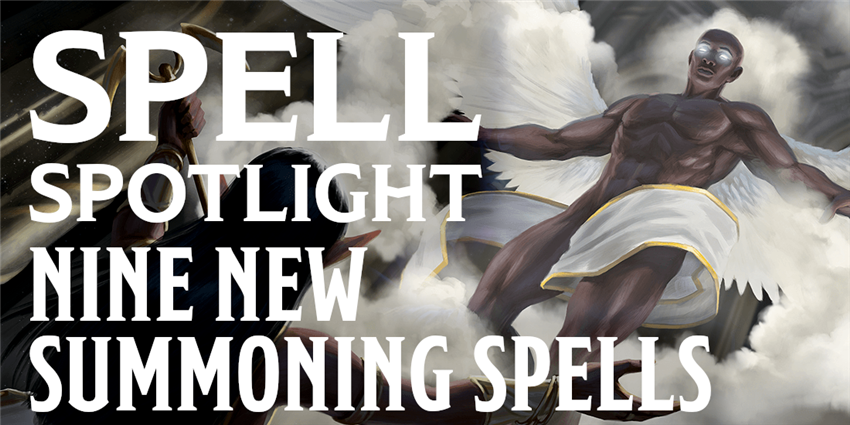
New Spells for Summoners
Tasha’s Cauldron of Everything introduces no fewer than nine new summoning spells, usable by a variety of different classes. These spells are already in your Compendium if you’ve purchased Tasha’s, but you can also purchase these spells individually by scrolling down to the Spells section on the Tasha’s Cauldron of Everything product page on the D&D Beyond Marketplace. In order of spell level, these spells are:
- Summon beast, a 2nd-level spell for druids and rangers
- Summon fey, a 3rd-level spell for druids, rangers, warlocks, and wizards
- Summon shadowspawn, a 3rd-level spell for warlocks and wizards
- Summon undead, a 3rd-level spell (the only necromancy spell of the bunch) for warlocks and wizards
- Summon aberration, a 4th-level spell for warlocks and wizards
- Summon construct, a 4th-level spell for artificers and wizards
- Summon elemental, a 4th-level spell for druids, rangers, wizards, and warlocks of the Fathomless patron (water only)
- Summon celestial, a 5th-level spell for clerics and paladins
- Summon fiend, a 6th-level spell for warlocks and wizards
These spells range from 2nd to 6th level, and give characters of a variety of different classes the ability to summon creatures from almost every type in the game. Notably, humanoid, dragon, giant, ooze, and plant are missing—though there’s probably a good reason for most of those creatures not to appear in this list of conjurations. It would be cool to summon a gloopy ooze or a minor drake to help you fight, though, wouldn’t it?
Have you created a summoning spell for oozes or dragons in the D&D Beyond Homebrew tools? Share it in the comments!
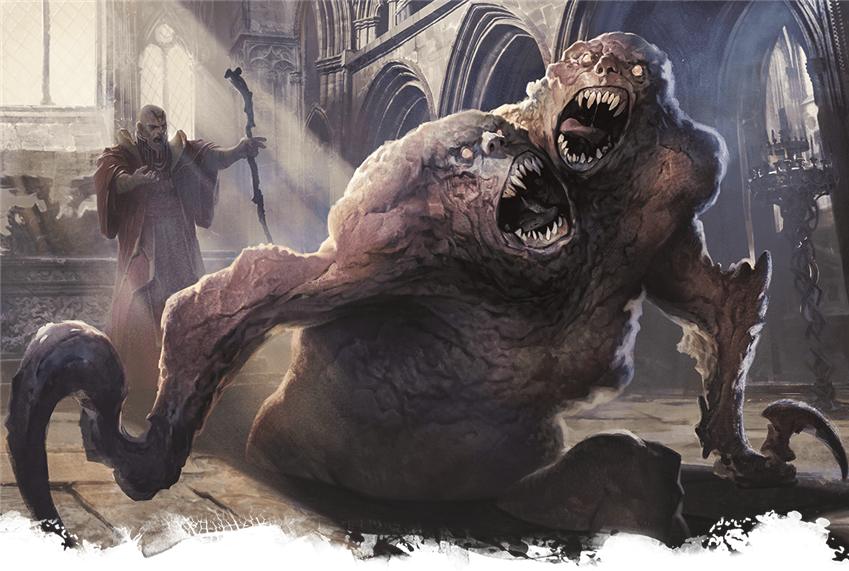
These spells share a number of similarities. Notably, they all summon a single creature, have a casting time of 1 action, last as long as you concentrate on them up to a maximum of 1 hour, the spell ends when the creature is reduced to 0 hit points, and you can conjure the creature within 90 feet of the caster. They also all require an expensive material component which, notably, is not consumed when you cast the spell. So, once you spend money on your component, you can use it to cast the spell as many times as you want. If you look closely, you’ll notice that the cost of this special material component is a number of gold pieces equal to the level of the spell × 100. So, the 2nd-level spell summon beast requires a golden acorn worth 200 gp, while the 6th-level spell summon fiend requires a ruby vial worth 600 gp.
Also, these creatures’ proficiency bonus is always equal to yours, and their power scales based on the level at which you cast the spell. That makes these spells some of the only spells in fifth edition Dungeons & Dragons that scale in power based on your character’s level—to say nothing of the fact that they also scale in power based on your spell level!
Let’s take a quick look at the summon beast spell for an example of how these spells work!
Summon Beast
This 2nd-level spell is available to druids and rangers. When you cast it, you call forth a bestial spirit, and choose if the beast you summon is aquatic, aerial, or terrestrial. Other than that choice, its cosmetic appearance is entirely up to you. You’ll find that this is a common theme among these new summoning spells, too; their stats are identical no matter what appearance you decide this spirit creature takes.
This beast’s hit points, movement speed, and its unique trait varies based on what type of environment it belongs in. Land creatures have a climb speed and high hit points, and have Pack Tactics. Air creatures have low hit points, a fast flying speed, and the enviable Flyby trait. Finally, water creatures have a swimming speed, high hit points, the Pack Tactics trait, and the ability to breathe underwater—but of course, they can’t breathe on land.
This beast is Small size, about the size of a large terrier, an eagle, or a small seal. They have relatively low Armor Class and hit points, but make up for it with a powerful attack and useful offensive traits like Flyby and Pack Tactics. Their Multiattack trait lets them make a number of attacks per turn equal to half the spell’s level—since this is a 2nd-level spell at base, they can only make one attack per action, but if you cast it using higher-level spell slots, they can make two attacks with a 4th-level slot, and so on.
As you can see, each of these new summoning spells allow you to customize your conjured creature on the fly, choosing certain aspects of them to suit the situation, and even improving their power with increased AC, hit points, attack bonuses, and damage based on the level you cast the summoning spell at. This is highly customizable, but also requires you to do some quick napkin math at the table, so be prepared by getting your creature’s stats ready while your friends are taking their turns before you!
Every one of these spells has a variety of different forms for your creature to take, giving you the ability to conjure the right creature for the task when you need to.

Summon Fey
This 3rd-level spell, for druids, rangers, warlocks, and wizards, summons a fey spirit that is skilled at debuffing enemies and making them easier for you and your allies to defeat. You choose a mood for the fey when you summon it, Fuming, Mirthful, or Tricksy. Each of these moods grants the fey a debuffing power that it can use when it uses its Fey Step bonus action. (Though, the fuming fey is just good at attacking, since it’s so angry.)
Summon Shadowspawn
This 3rd-level spell for warlocks and wizards conjures a horrid creature from the Shadowfell to do your dark bidding. You choose an emotion when you summon it, Fury, Despair, or Fear, which grants it new abilities to aid in offense, debuffing, or stealth, respectively. This shadowspawn is an ugly, misshapen, and vaguely humanoid creature, like a grotesque thing out of a nightmare.
Summon Undead
This 3rd-level spell for warlocks and wizards calls forth an undead spirit to plague the living. When you summon it, you choose if the undead is ghostly, putrid (like a festering zombie), or skeletal. Ghostly undead are mobile creatures skilled at debuffing enemies by frightening them, while putrid undead are likewise strong debuffers with an aura that causes creatures to be poisoned and an attack that can paralyze. Skeletal undead lack the mobility of ghosts and the negative status conditions of zombies, but possess a powerful and straightforward necrotic magical attack.
Summon Aberration
This 4th-level spell for warlocks and wizards summons a creature whose spirit is drawn from the alien horrors of the Far Realm, the roiling planar power of Chaos, or the hungering stars themselves. When you summon it, you choose if your aberration is a beholderkin, a slaad, or a star spawn. Beholderkin are powerful, mobile ranged damage-dealers. Slaad are durable, regenerating melee fighters. And star spawn are so toxic to the mind, that even being near one causes creatures to suffer psychic damage.
Summon Construct
Artificers will love this 4th-level spell, because it represents their ability to deploy a powerful fighting machine of their own design. Wizards, too, can call forth a golem of their own creation or a modron from the orderly plane of Mechanus. You can choose stone, clay, or metal, with metal constructs dealing heavy damage through their heated bodies, stone constructs debuffing foes by infecting nearby creatures of flesh and blood with their stony nature, and clay creatures fighting in a berserk fury against all nearby enemies.
Summon Elemental
This 4th-level spell for druids, rangers, and wizards gives you four options to choose from! Despite the many different options to choose from, the differences between these elementals feel less significant than the differences between other summoned creatures. They generally only affect a movement type, a type of damage resistance, its attack’s damage type, and the rarely useful Amorphous Form ability. The Fathomless warlock can cast this spell, but can only summon water elementals. Given how similar the four elementals summoned by this spell are, this isn’t much of a restriction.
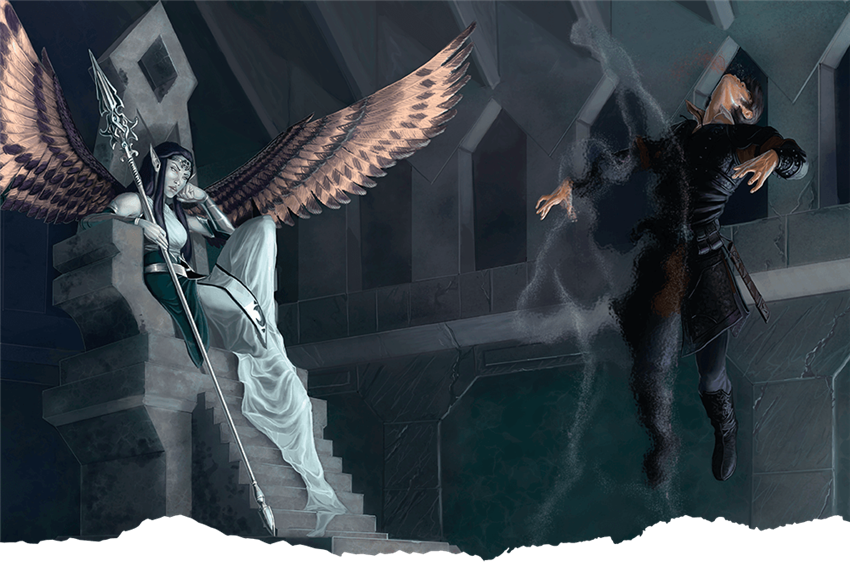
Summon Celestial
The power to summon angels to is granted to clerics and paladins with this 5th-level spell. When you summon a celestial with this spell, you can gain access to one of two types: Avenger or Defender. Avengers are powerful, mobile damage dealers with their Radiant Bow, and Defenders are tanky protectors with the ability to heal whenever they attack with their Radiant Mace. Once per day, either of these types of celestials can confer a small amount of healing upon another creature.
Summon Fiend
Beyond the shining light of heaven lives the gruesome decadence of fiends. Available to wizards and warlocks, this 6th-level spell allows you to summon forth a demon, a devil, or a neutral party in the war to control the cosmos, a yugoloth. These fiends are all quite different, with demons being wild terrors in combat that die as explosively as they lived. Devils are flighty ranged combatants, hurling flame while they fly out of range of enemy attacks. And yugoloths are evasive combatants who warp around the battlefield while tearing chunks out of their foes with their claws.
What summoning spells do you want to use? What creatures will you call forth from the beyond to do your bidding? And what class do you most want to play, now that these spells are at your disposal?
Create A Brand-New Adventurer Acquire New Powers and Adventures Browse All Your D&D Content
 James Haeck is the lead writer for D&D Beyond, the co-author of Waterdeep: Dragon Heist, Baldur's Gate: Descent into Avernus, and the Critical Role Explorer's Guide to Wildemount, a member of the Guild Adepts, and a freelance writer for Wizards of the Coast, the D&D Adventurers League, and other RPG companies. He lives in Seattle, Washington with his fiancée Hannah and their animal companions Mei and Marzipan. You can find him wasting time on Twitter at @jamesjhaeck.
James Haeck is the lead writer for D&D Beyond, the co-author of Waterdeep: Dragon Heist, Baldur's Gate: Descent into Avernus, and the Critical Role Explorer's Guide to Wildemount, a member of the Guild Adepts, and a freelance writer for Wizards of the Coast, the D&D Adventurers League, and other RPG companies. He lives in Seattle, Washington with his fiancée Hannah and their animal companions Mei and Marzipan. You can find him wasting time on Twitter at @jamesjhaeck.








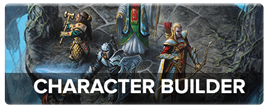
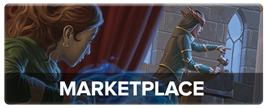
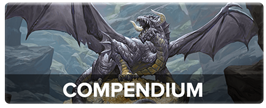
-
View User Profile
-
Send Message
Posted Jan 28, 2021Dude, your logic makes no sense. Comapring to 3.5? Were talking about 5e. Using words like instances? This isn't a video game. You are not summoning instances, stat blocks, or 5 foot squares. What are you talking about? You are summoning beasts. A swarm of beatS are not 1 beast, they are multiple beasts.
Regardless, im sorry to say, as far as RAW is concerned you are wrong. In the sage advice compendium, page 16, Jeremy crawford confirms this.
"Can conjure animals summon a swarm? No. Conjure animals summons individual creatures, and swarms are groups of creatures."
Your obviously entitled to rule swarms however you want in your game, but you should talk to your players or DM before you break the rules
-
View User Profile
-
Send Message
Posted Jan 28, 2021I'm not comparing 3.5 and 5e. In fact I'm explicitly not. I'm saying that using wildshape as a basis for any other effect that isn't wildshape is silly.
Mentioned 3.5 because there ARE feats in that game to turn in to swarms, but if you read it again you'll see " Apples =/= oranges. In 3.5 there were whole classes and alternate class features that wild shaped into swarms, that's not in 5e. "
If you look in listing online swarms are listed where you see beasts listed. Swarms have one stat block and occupy 1 space. They are implied to move as one unit.
That said, I'm glad you bothered to look up a semi-legitimate source, so that's good.
Have a good one dude, I'm done with you
-
View User Profile
-
Send Message
Posted Feb 2, 2021Even if you can save up for such spell components, it will usually be more attractive to just get the (free) old version and invest the money in something like a magic item instead.
-
View User Profile
-
Send Message
Posted Feb 2, 2021Be aware that in the Monster Manual, the creature type of swarms is [Size] swarm of [Size] beasts (e.g. Medium swarm of Tiny beasts) rather than [Size] beast (e.g. Medium beast). Thus, RAW clearly distinguishes between a swarm of beasts and a single beast.
-
View User Profile
-
Send Message
Posted Feb 2, 2021Besides, it feels like there are four times of monstrosities: Powerful creatures akin to dragons that are wholly unique (krakens, yetis, basilisks, behirs, sphinxes); 'almost humanoids' that include yuan-ti abominations and malisons, as well as driders and etteercaps; 'almost beasts' that are bestial in nature but aren't present in real life (owl bears, carrion crawlers, phase spiders); and shadowspawn.
-
View User Profile
-
Send Message
Posted Feb 3, 2021Thanks for contributing something useful to the discussion! (That was in no way sarcastic). Upon checking, you're right!
-
View User Profile
-
Send Message
Posted Mar 4, 2021So I love these spells - is there any plans to update the encounter builder/combat tracker to add these creatures in when the spell is cast? Would make my life as a DM a LOT easier when managing NPC spells.
Also, even if I were to try and prepopulate the conjurations in the encounter builder for an 'in case' moment, the spirit creatures don't exist as 'monsters'.
-
View User Profile
-
Send Message
Posted Mar 4, 2021I don't think there's an ETA when this might be supported yet; the difficulty is that the summoned creatures' stats are calculated from the character who summoned them, and the level at which the spell was cast, but regular monsters are a self-contained, static stat block.
To use these in one of my current campaigns I've had to manually create a homebrew monster for each level I can currently cast this spell at, and even if someone else in the party had the same spell, the monster block might not be exactly the same (if their spellcasting modifier is lower than mine, then attack rolls will be different, for example).
WotC should probably have just had them scale by spell level alone, and simplified the calculations involved; this is my main criticism of the summon spells, otherwise I love their addition.
-
View User Profile
-
Send Message
Posted Apr 19, 2021I like the idea of a summoning spell for dragons, oozes, or plants. I hope something like that is added to the game. Meanwhile, I created a homebrew spell called Summon Dragon. It allows you to summon a mini draconic spirit. Click on the link to view it.
-
View User Profile
-
Send Message
Posted Apr 19, 2021-
View User Profile
-
Send Message
Posted Apr 19, 2021Have you checked out the latest Unearthed Arcana, EnchantedNinja12345? It has Wizard of the Coast's playtest version of that spell in it.
-
View User Profile
-
Send Message
Posted Dec 19, 2021Is there a way to have the Summon Fey attack and damage info in my "actions" ( attacks ) on my ddb character sheet. Like next to my longbow and cantrips. I tried to make a homebrew item, but it not working with the 2 damage types, to-hit mod.
It would also help if I could add Dire Wolf Bite to my attacks and use the +5 to hit instead of my hit bonus.
-
View User Profile
-
Send Message
Posted Feb 27, 2022Could Tasha’s summoned creatures fight underwater? Do they need air? If they do, is it possible to drown like any other pc using general raw underwater combat rules?
-
View User Profile
-
Send Message
Posted Feb 27, 2022Unless a creature says it has water breathing or doesn't need to breathe then it is subject to all the same rules as any other creature so yeah, they can drown if you don't give them water breathing somehow.
-
View User Profile
-
Send Message
Posted Mar 17, 2022I created a summoning spell for plants. It follows the same criteria as other summoning spells. The link to it is here: https://www.dndbeyond.com/spells/1373233-summon-plant
Summon Plant is available to bards, druids, rangers, and wizards, and can be one of the following types of plants: Tree, Spore, Thorny, and Ensnaring.
-
View User Profile
-
Send Message
Posted Mar 17, 2022Being able to only summon water elementals is somewhat a hindrance. Water Elementals are extra susceptable to spells that absorb moisture, such as blight. Also, you are restricted to bludgeoning damage. I'm not sure if it would be considered magical or not. If it's damage from a summoned creature, it wouldn't be direct damage from one of your spells, and therefore wouldn't be magical unless specified in the stat block.
-
View User Profile
-
Send Message
Posted Mar 17, 2022What you're describing would be a houserule, as canonically water elementals are not made of water. Allowing spells like create or destroy water to harm water elementals opens up a whole can of worms, because they're not intended for that purpose; they target water, not creatures, water elementals are creatures, and so are humans who are 80% water and so-on.
Likewise blight has no special effect on a water elemental as a water elemental is not a plant. All blight does is destroy 8d8 damage worth of moisture from the water elemental, same as it does from any other creature; it deals no additional damage than that.
-
View User Profile
-
Send Message
Posted Mar 17, 2022Nvm. I meant abi-dalzim's horrid wilting. Plants and water-based creatures make the saving throw against that spell with disadvantage. Blight only affects plants. So the downside of a water elemental would only matter at really high levels. I forgot. I though blight was stronger against plants AND water elementals, but this only applies to Abi-Dalzim's Horrid Wilting.
-
View User Profile
-
Send Message
Posted May 6, 2022I’m curious to know if a summoned creature (specifically shadowspawn) can be commanded once to do a continuous action. Can you tell it to “attack that creature until it’s dead” per say. Or do you need to specifically, verbally tell it to attack every turn lest it just take the dodge action?
-
View User Profile
-
Send Message
Posted May 6, 2022These spells only say "it obeys your verbal commands", so anything you can describe to it, and which it is capable of doing, it will do.
So there's no reason to assume you need to order it to attack every turn, and if you give it commands such as "defend me" or "fight our enemies" then you don't even need to choose new targets for it (though your DM may choose its targets based on the command you gave in this case).
They're much more freeform than companion creatures like a Battle Smith's Steel Defender which can only take prolonged actions in combat if you are incapacitated, as otherwise it requires a bonus action every round. On the other hand, a Steel Defender doesn't require concentration so the caster bumping their noggin on a low door frame won't cause it to suddenly vanish. 😂